Year 3 Fractions, Decimals and Percentages
Add and Subtract Fractions (A)
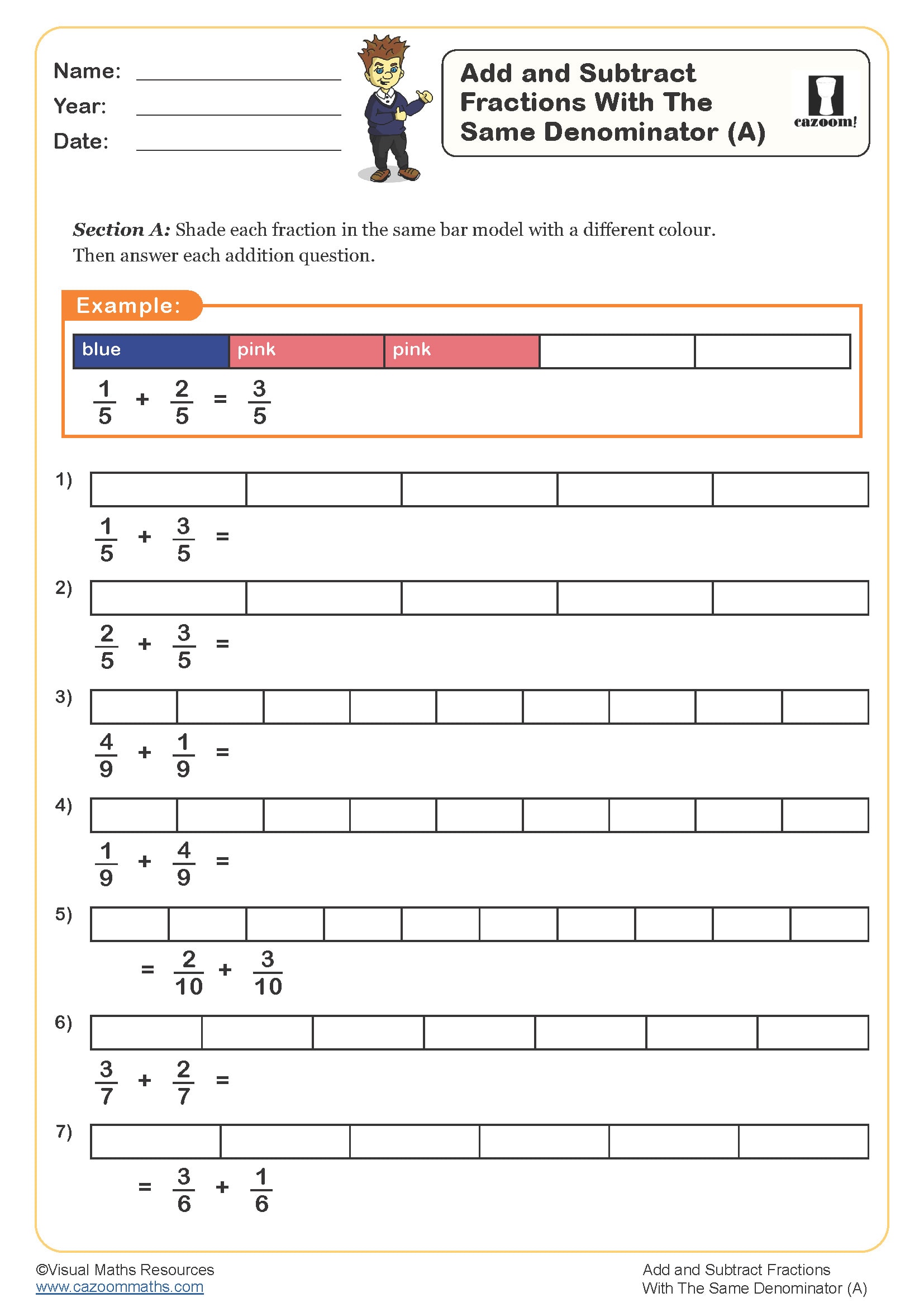
Add and Subtract Fractions (C)
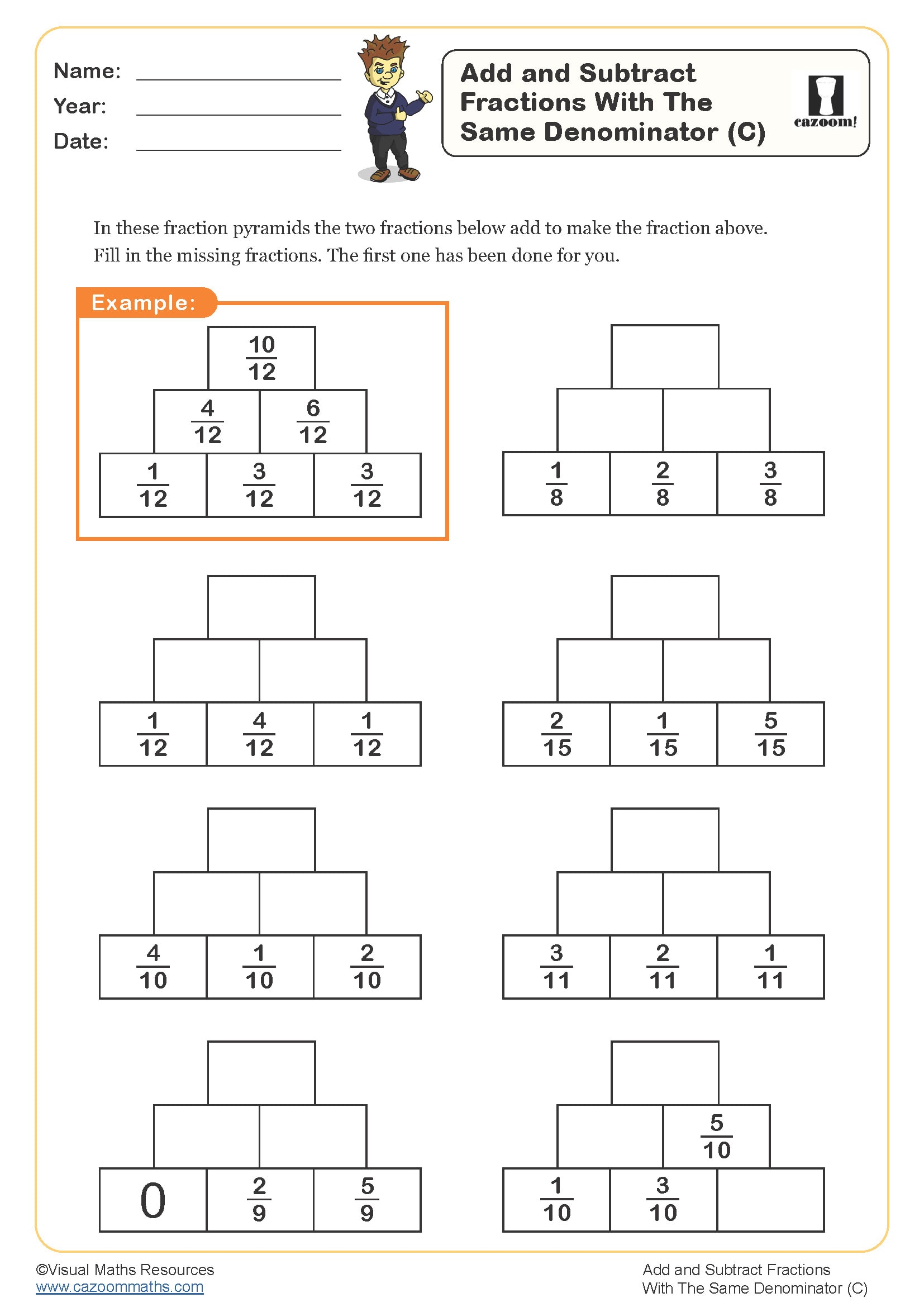
Compare and Order Fractions with the Same Denominator
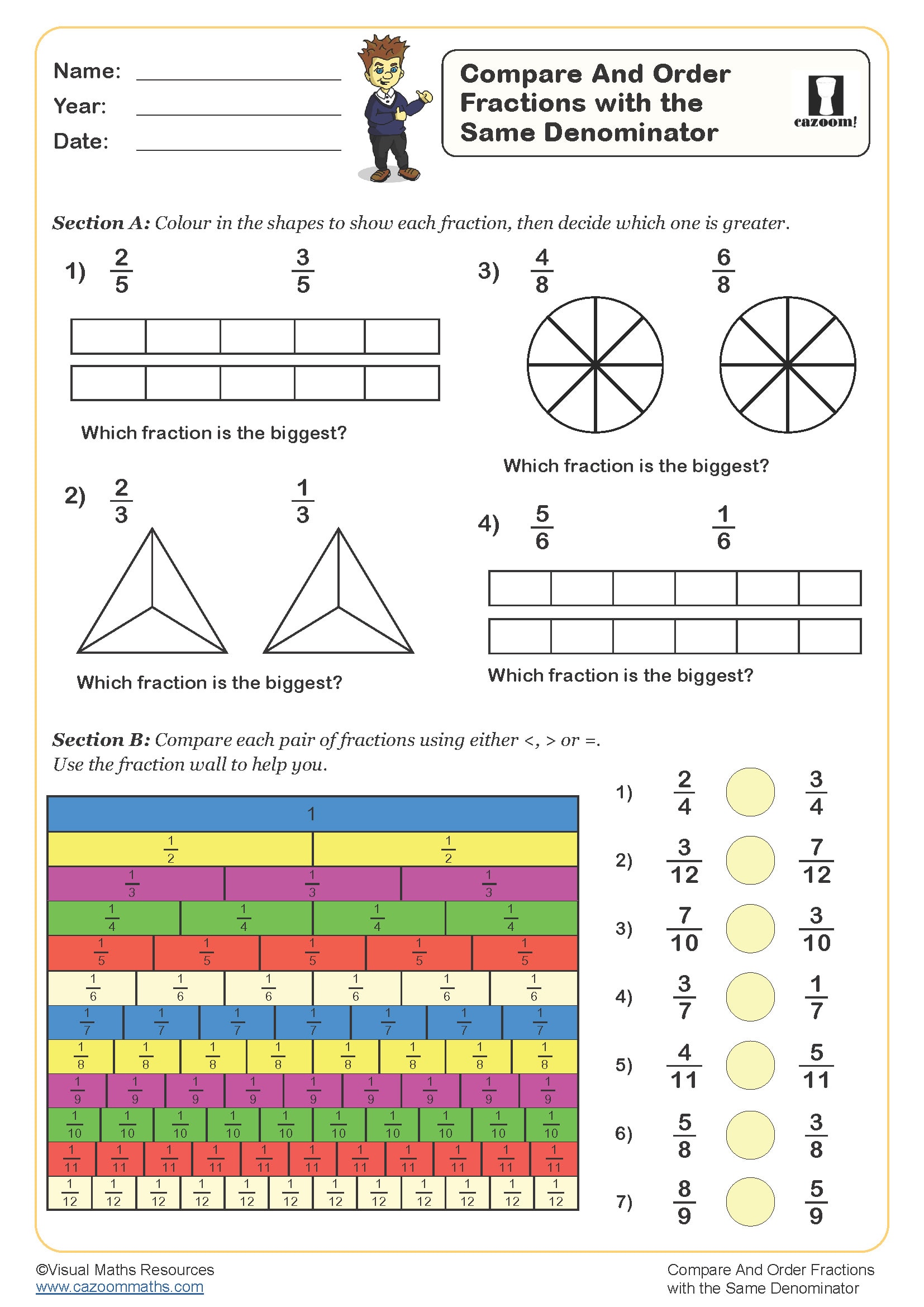
Compare and Order Unit Fractions
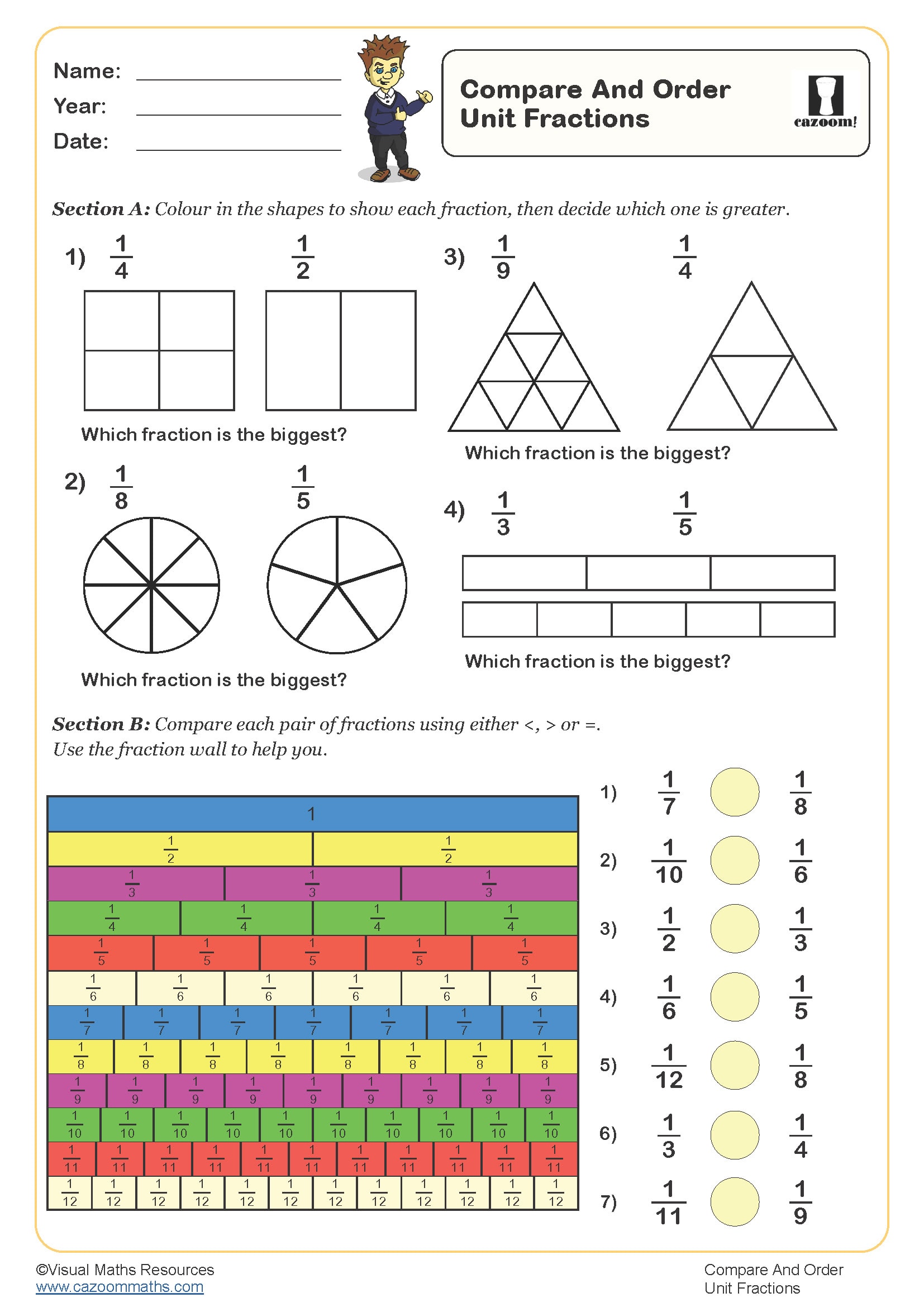
Counting in Tenths (A)
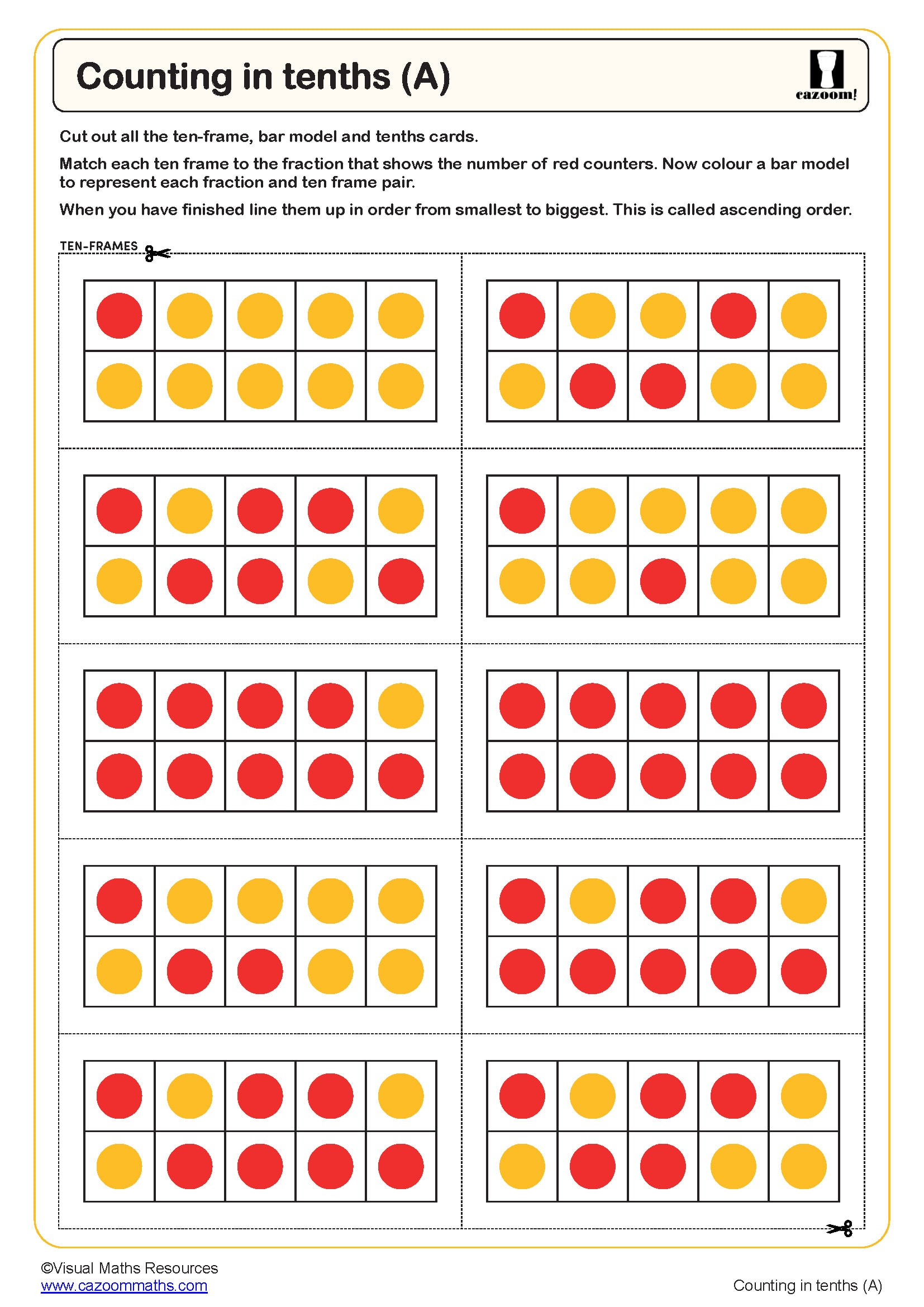
Equivalent Fractions Using Bar Models (A)
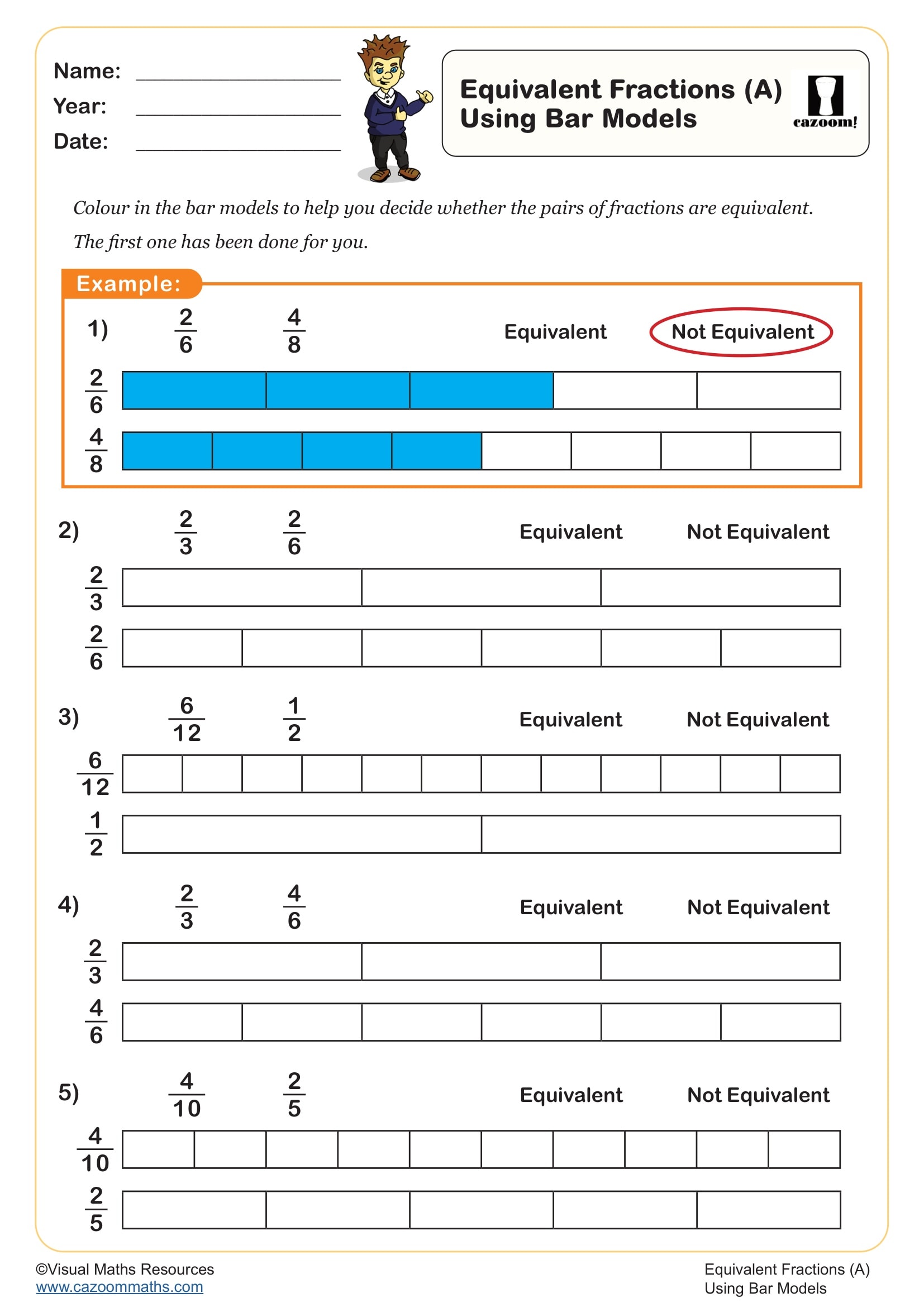
Finding fractions of a set of objects (C)
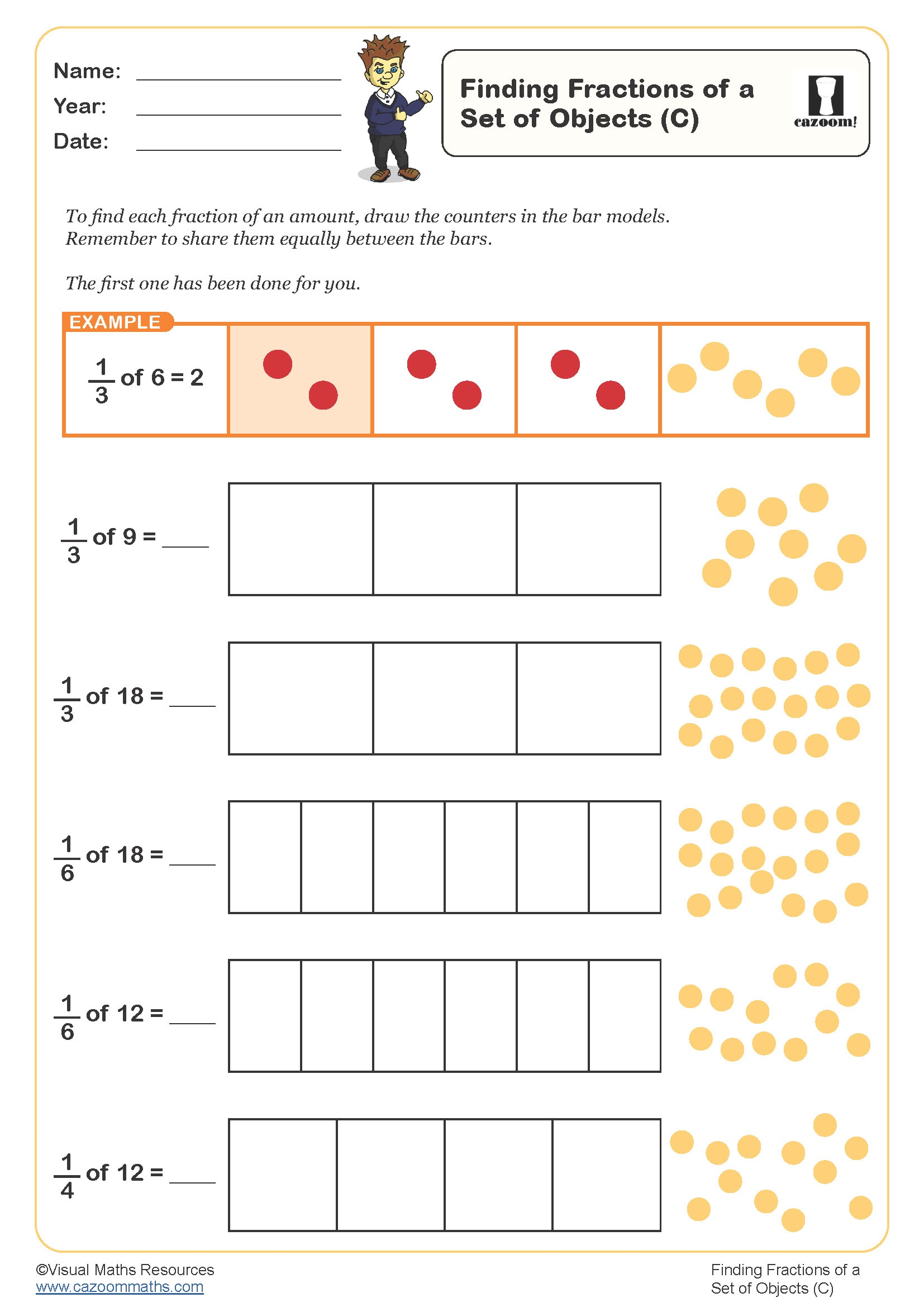
Finding fractions of a set of objects (D)
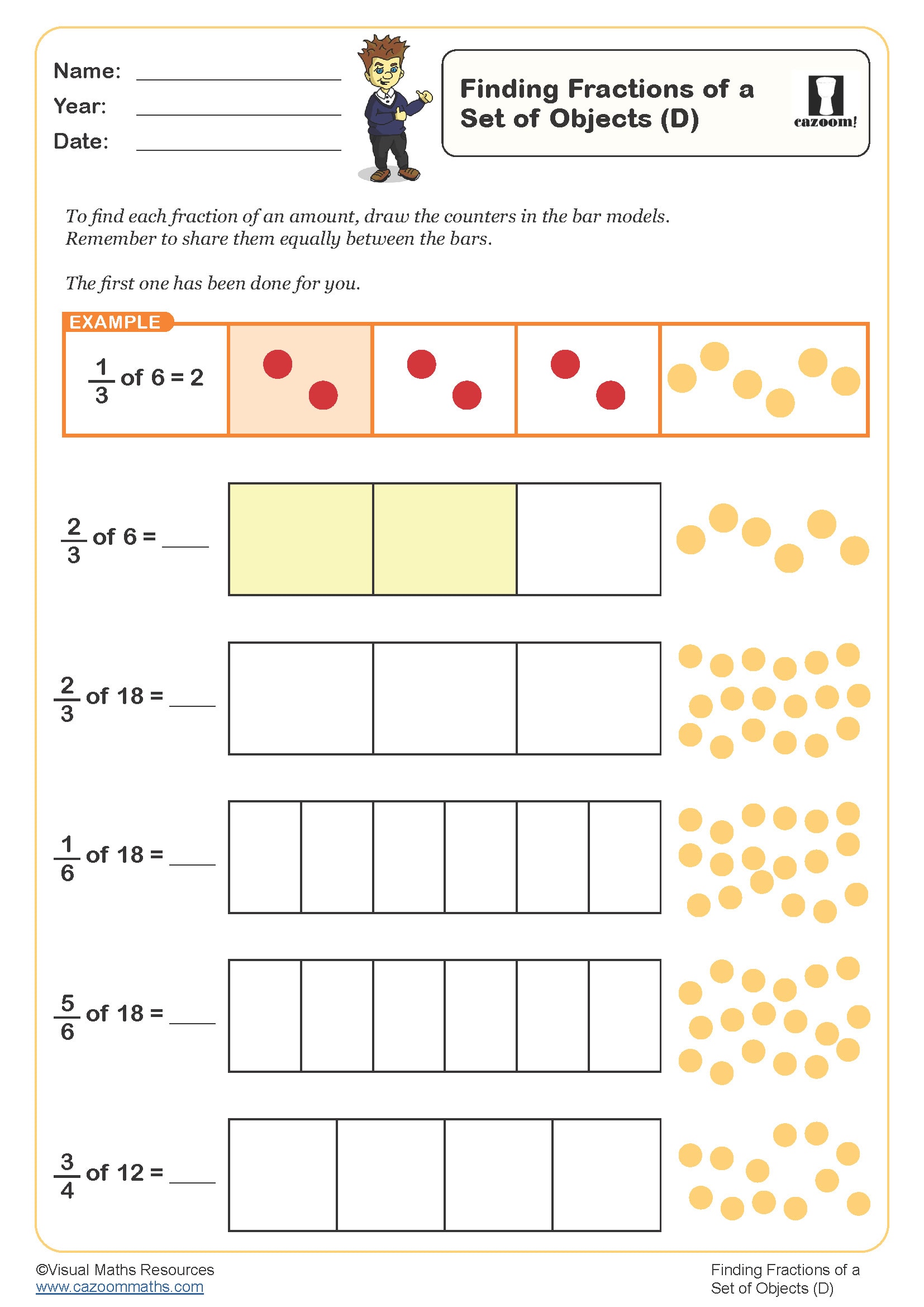
Halving 2 Digit Even Numbers
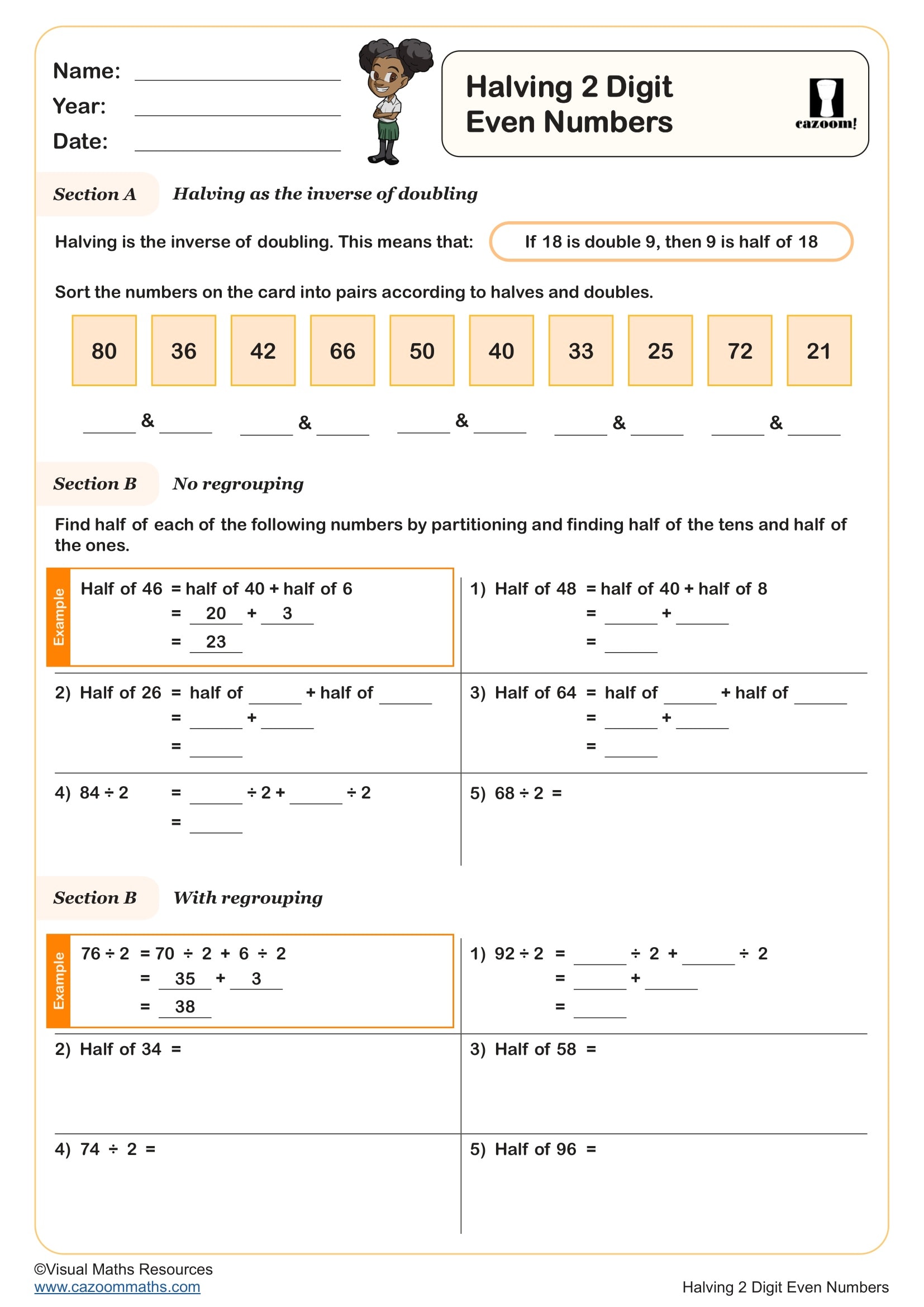
Understanding the Whole
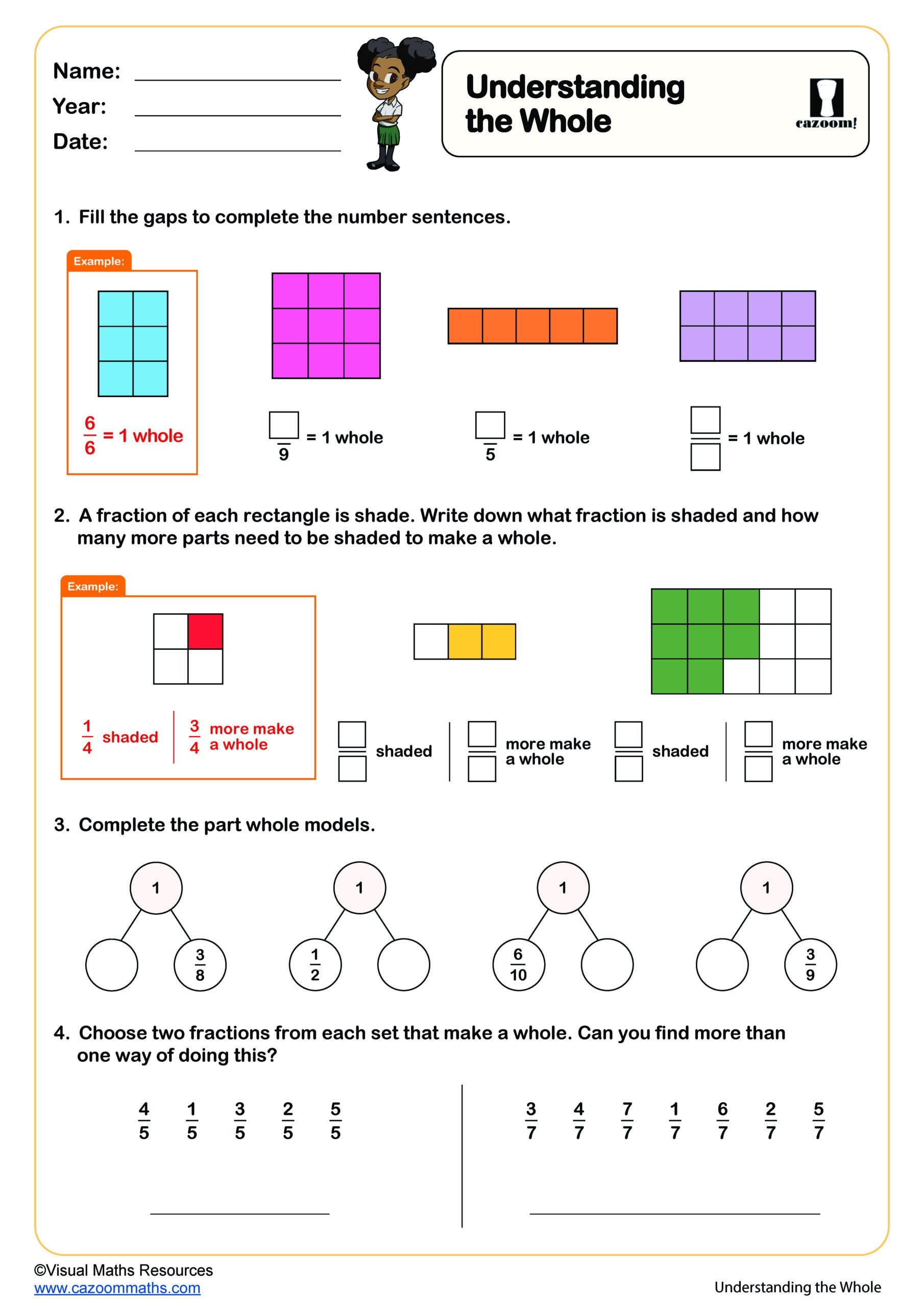
Essential Year 3 Fractions Skills with Comprehensive Answer Schemes
Our Cazoom Maths resource collection bridges the gap between their previous learning and the new concepts perfectly! Each of our ready-to-use, printable PDF worksheets focuses on fundamental concepts like recognising halves and quarters, understanding equal parts, and introducing simple decimal notation through money. The detailed answer sheets show clear working methods that help both teachers and parents support children's learning journey effectively.
Mathematical Concepts Covered in These Progressive Worksheets
Fractions, decimals, and percentages are simply three different ways of expressing the same mathematical idea - parts of a whole. Fractions show this with numbers like 1/2 or 3/4 (think of slicing a pizza), while decimals use a dot like 0.5 or 0.75, and percentages add a % symbol like 50% or 75%. They're all connected because 1/2 = 0.5 = 50%, which makes them incredibly useful for everything from cooking measurements to understanding test scores.
Your primary school students progress from recognising and creating unit fractions to comparing and ordering fractions with the same denominator. Our worksheets include engaging activities with fraction strips, number lines, and visual representations that make abstract concepts tangible. Children particularly enjoy the pattern-spotting activities and the connection between fractions and familiar measurement contexts.
Building Confidence Through Structured Fractions Practice
Here's something we have consistently observed in Year 3 classrooms - children who master fraction fundamentals early show remarkable confidence when tackling more complex mathematical concepts later. These worksheets provide essential practice that directly supports National Curriculum objectives while preparing students for Year 4 challenges. The scaffolded approach ensures every child can access the learning while being appropriately challenged.
• Number line skills - positioning fractions accurately between 0 and 1
• Equivalent fraction recognition - understanding that 2/4 equals 1/2
• Fraction comparison - using visual models to compare sizes
• Unit fraction mastery - solid understanding of 1/2, 1/3, 1/4, 1/5, 1/10
• Mathematical reasoning - explaining fraction relationships confidently
• Assessment preparation - aligned with Year 3 SATs expectations
Cross-Curricular Applications Where Students Encounter Fractions
Our number resources connect mathematical learning to cooking measurements (1/4 cup of flour), art projects (folding paper into thirds), and even PE activities (running 1/2 the track). The beauty is watching children suddenly recognise fractions during science experiments or geography lessons. It's genuinely exciting when they start spotting mathematical patterns everywhere around them.
• Science experiments - measuring liquids in fractional amounts
• Art and design - dividing shapes and patterns into equal parts
• Geography skills - understanding map scales and proportions
• Cooking activities - following recipes with fractional measurements
• Music education - understanding rhythm and beat patterns
• Time concepts - quarter past, half past, three-quarters past
• PE and sports - dividing teams and tracking progress portions